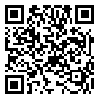BibTeX | RIS | EndNote | Medlars | ProCite | Reference Manager | RefWorks
Send citation to:
URL: http://ioh.iums.ac.ir/article-1-1348-en.html
Background and aims: One of the disorders which make some limitation for people is cervical spine injury. It causes disturbances in the upper sensory and motor extremities. This complication limits daily activities. The aim of this study is to design a manual toothbrush for cervical spinal cord handicapped (tetraplegia C5-C7) that is in compliance with the movement restrictions of this group. The tool’s convenience was measured by the user-centered method.
Methods: The research methodology of this study is a case study and data were collected by field study and questionnaires. The UCD method was also used to gain information and pertinent feedback of the users. In this study, 27 volunteers participated. Based on preliminary questioning and implementing the phases of user- centered approach, the final design of the toothbrush was achieved. In the final stage of UCD in which the aim was to provide the comfort parameters of tetraplegia handicapped C5-C7’s manual tool, the satisfaction questionnaire of manual tool was used to determine the convenience level.
Results: By using UCD method and gaining the feedbacks of the users, it is concluded that the physical properties of the toothbrush should be matching with the movement limitations of the hands. In this phase, the authors provided a list of dimensional properties that finally were applied in design.
Colclusion: It seems that emphasis on user autonomy is the most important item in product design for this group that is provided by the coordinating the manual tools’ form, mechanism and dimensions with the limitation of user’s hands.
Received: 2014/09/28 | Accepted: 2015/01/7 | Published: 2015/07/29
| Rights and permissions | |
 |
This work is licensed under a Creative Commons Attribution-NonCommercial 4.0 International License. |





